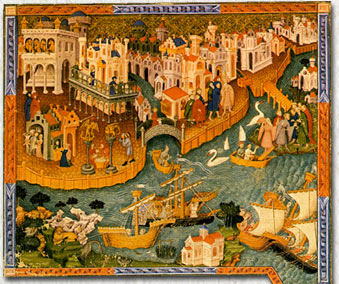|
|
 |

The Feast of the Gods was a product of the Italian Renaissance, a time of unprecedented creativity and discovery throughout Europe. Voyages to new and distant lands brought trade and unimagined wealth. In the east, the sacking of Constantinople by the Turks in 1453 brought scholars, and their ancient texts, to Europe, inspiring a re-discovery of the classical past of Greece and Rome. It was a time of new knowledge-astronomers, for example, showed that the planets revolved not about the earth but about the sun—and the invention of printing disseminated the new knowledge. Such changes affected man's thinking—about himself, his past, his world, and his place in the world. This period (c. 1300-1600) which marks the transition between medieval and modern times, is identified as "The Renaissance."
Change was greatest in Italy. Painters turned from religious subjects to everyday people, stories and myths. The use of oil paints and canvas supports revolutionized artistic technique. Around 1520 in Venice, Bellini and Titian painted the Feast of the Gods, a bacchanal inspired by the writings of Ovid. Both technically and stylistically, it would have been impossible and unthinkable a century before.
< Previous Next >
|



